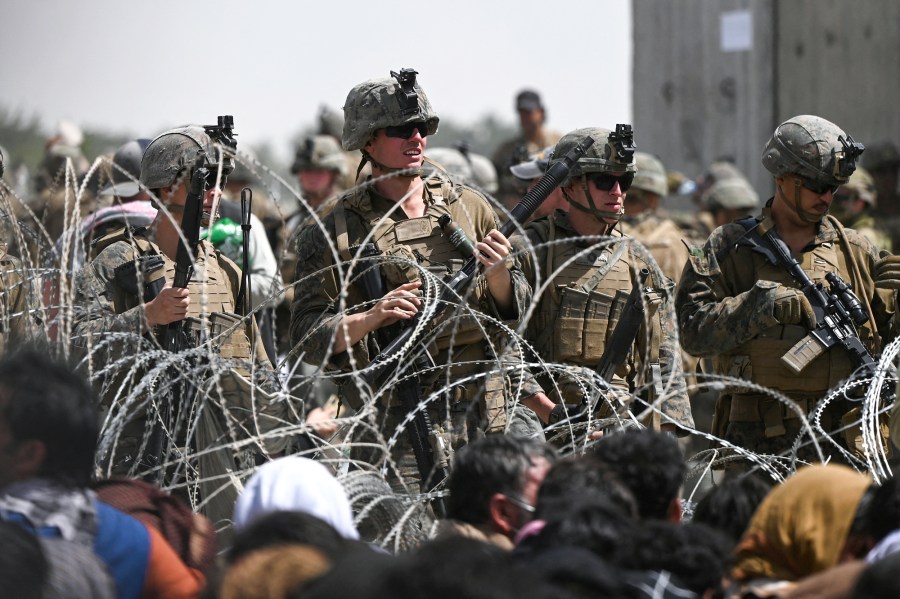Earlier this month, the Office of the Director of National Intelligence released its annual threat assessment, a compendium of “worldwide threats to the national security of the United States.” On the third to last page of the report, to little fanfare, the report makes a startling statement about the threat to America from “global terrorism”: “al-Qa‘ida has reached an operational nadir in Afghanistan and Pakistan.”
Last September, Christy Abizaid, the director of the National Counterterrorism Center, said the same thing to similarly little notice. Al Qaeda’s “revival is unlikely,” she added, in part because of the loss of an “accommodating local environment.”
This should be a reason for celebration, but in reality, it demands a reckoning.
Warnings of potential terrorist sanctuaries in Afghanistan were a bipartisan exercise not only for presidents, but for legislators as well.
For 20 years after 9/11, the United States spent more than $2 trillion and lost nearly 2,500 soldiers fighting the Taliban in Afghanistan. For 20 years, U.S. policymakers argued that the American troop presence in Afghanistan was vital to U.S. national security because it would prevent a Taliban victory and the inevitable return of an al Qaeda safe haven that would again imperil U.S. security. And for 20 years, U.S. officials rarely questioned those dubious assumptions as they sent more and more troops into harm’s way to fight an enemy that posed at best, a marginal threat to the American people.
As early as October 2001, the same month the initial military intervention in Afghanistan began, Secretary of Defense Donald Rumsfeld identified one of the key goals of the mission as ending “the use of Afghanistan as a sanctuary for terrorism.”
That goal was achieved two months later when the Taliban were routed from power and al Qaeda operatives, including their leader Osama bin Laden, either fled the country or were killed. Many of those who fled found shelter in Pakistan, where (at least initially) the U.S. military could do nothing to attack them.
Yet, the presence of an actual al Qaeda safe haven in Pakistan, from which the terrorist group did not successfully launch terrorist attacks against the U.S. homeland, failed to convince policymakers that their fears of a potential al Qaeda safe haven in Afghanistan were perhaps unfounded.

In fact, the “safe haven” argument became such a seductive explanation for U.S. military interventions that President George W. Bush began justifying the continued U.S. troop presence in Iraq by arguing, “We’ll deny them the safe haven to replace the one they lost in Afghanistan.”
And as a Taliban insurgency began to ramp up in Afghanistan, the fears of an al Qaeda sanctuary there were used to justify not only maintaining the U.S.’ troop presence in Afghanistan — but expanding it. Soon after taking office in January 2009, President Barack Obama increased troop levels and announced a new “comprehensive strategy” that aimed “to prevent Afghanistan from becoming the al Qaeda safe haven that it was before 9/11.”
“If the Afghan government falls to the Taliban or allows al Qaeda to go unchallenged,” Obama argued, “that country will again be a base for terrorists who want to kill as many of our people as they possibly can.”
The first rule of Washington’s foreign policy mandarins is never admit you were wrong — even if the consequences of your misjudgment are dead American soldiers.
Other officials echoed Obama’s words in even more forceful terms. Richard Holbrooke, Obama’s special representative for Afghanistan and Pakistan, declared that if the Taliban returned to rule, “without any shadow of a doubt, Al Qaeda would move back into Afghanistan, set up a larger presence, recruit more people and pursue its objectives against the United States even more aggressively.” That, he said, is “the only justification for what we’re doing.”
Warnings of potential terrorist sanctuaries in Afghanistan were a bipartisan exercise not only for presidents, but for legislators as well. They would be repeated by one military leader after another. To listen to these confident proclamations is to believe that once terrorists cross the border into Afghanistan, they are magically transformed from mere mortals into Jason Bourne-like figures, capable of unprecedented levels of death and destruction.













